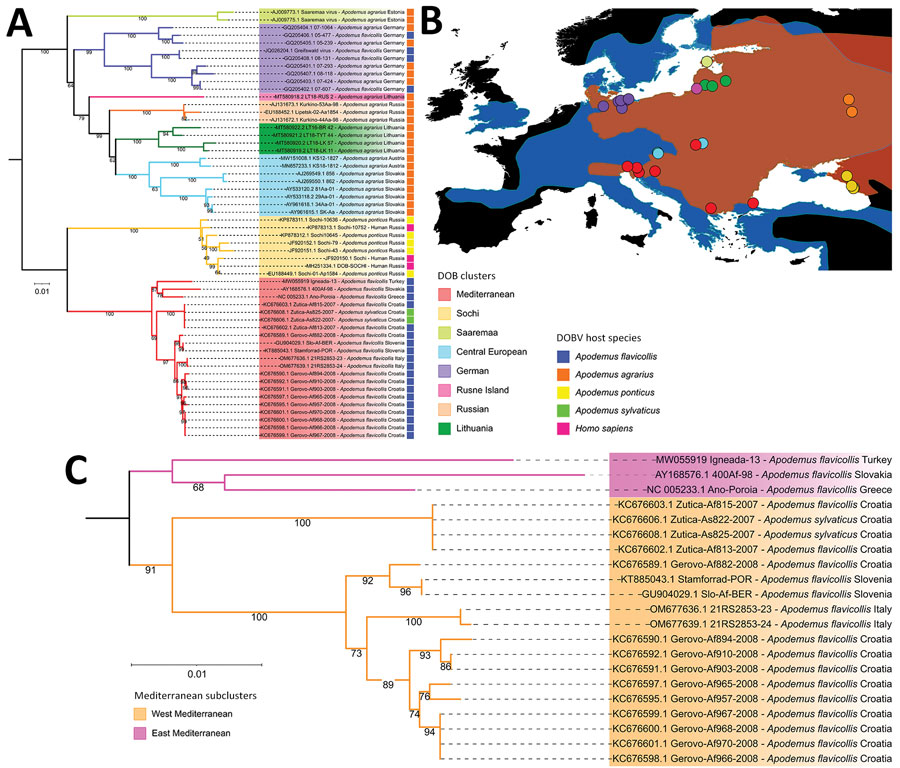Phylogenetic Characterization of Orthohantavirus dobravaense (Dobrava Virus)
Mert Erdin

, Ceylan Polat, Teemu Smura, Sercan Irmak, Ortac Cetintas, Muhsin Cogal, Faruk Colak, Ahmet Karatas, Mustafa Sozen, Ferhat Matur, Olli Vapalahti, Tarja Sironen, and Ibrahim Mehmet Ali Oktem
Author affiliations: University of Helsinki, Helsinki, Finland (M. Erdin, T. Smura, O. Vapalahti, T. Sironen); Hacettepe University, Ankara, Turkey (C. Polat); Balıkesir University, Balıkesir, Turkey (S. Irmak); Bulent Ecevit University, Zonguldak, Turkey (O. Cetintas, M. Cogal, F. Colak, M. Sozen); Ömer Halisdemir University, Niğde, Turkey (A. Karatas); Dokuz Eylul University, Izmir, Turkey (F. Matur, I.M.A. Oktem)
Main Article
Figure 1

Figure 1. Phylogenetic characterization of DOBV combined with reservoir host and geographical distribution data. A) Maximum-likelihood tree based on all available complete DOBV sequences constructed using a transition plus empirical base frequencies plus gamma 4 substitution model. Colors indicate major clusters and hosts from which sequences were obtained. B) Distribution map of 2 major DOBV reservoir hosts, Apodemus flavicollis (blue) and A. agrarius (orange) mice, and their overlapping distribution zones. Solid circles indicate locations of complete sequences used in maximum-likelihood tree . C) Pruned version of the tree in panel A showing the division of the Mediterranean cluster into West and East Mediterranean subclusters. DOBV, Dobrava virus (Orthohantavirus dobravaense).
Main Article
Page created: February 06, 2024
Page updated: March 20, 2024
Page reviewed: March 20, 2024
The conclusions, findings, and opinions expressed by authors contributing to this journal do not necessarily reflect the official position of the U.S. Department of Health and Human Services, the Public Health Service, the Centers for Disease Control and Prevention, or the authors' affiliated institutions. Use of trade names is for identification only and does not imply endorsement by any of the groups named above.
